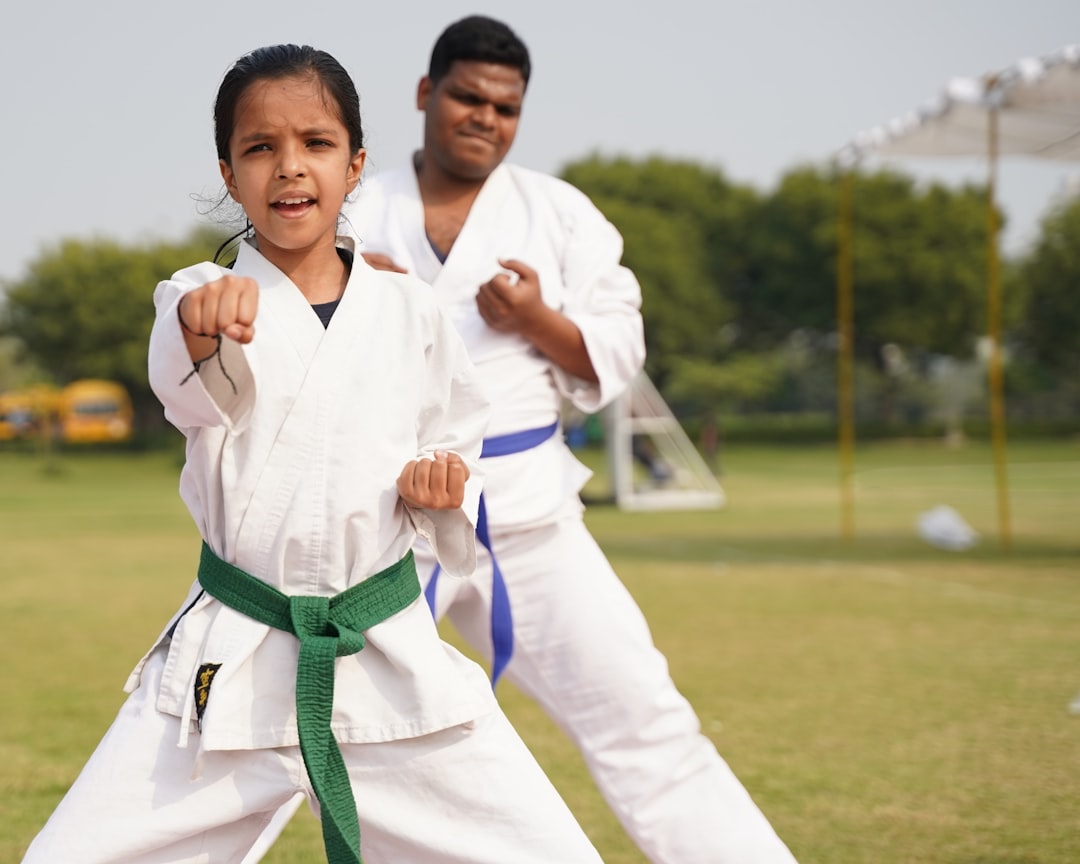When preparing for karate training, selecting the right attire and protective gear is key for both comfort and honoring traditional practices. A high-quality gi made from breathable, lightweight fabric that allows for full range of motion during techniques like kata is a must. Renowned brands such as Adidas or Nike offer karate uniform names that strike an ideal balance between durability, functionality, and comfort, ensuring the gi fits well and maintains its quality through frequent washes. Protective gear including hand pads, shin guards, and a mouthguard are indispensable for sparring and kumite to prevent injuries without hindering performance. A correctly ranked belt is essential as it signifies your skill level and shows respect for the discipline. Proper footwear with good grip on the dojo floor is also necessary. Choosing the right gear not only enhances your karate practice but also pays tribute to the rich traditions of the sport. Whether you're a beginner or an advanced practitioner, the correct equipment tailored to your training environment is crucial for your development in karate.
Embarking on the journey of mastering Karate requires not only dedication and practice but also the right equipment. This comprehensive guide delves into what to bring for Karate, ensuring you’re fully equipped for every aspect of training. From selecting the most suitable karate uniform name for your style and rank, to understanding the importance of proper fitting and material for optimal comfort and mobility, we cover essential gear and beyond. We’ll explore key features of a high-quality karate gi, accessories that accompany your gi, including belts and protective gear, and the best footwear options for training. Additionally, we’ll discuss advanced equipment for Karate practitioners, such as protective pads, electronic scoring systems, and recovery tools. Whether you’re a beginner or an experienced martial artist, this article will provide valuable insights to enhance your performance and maintain your gear effectively.
Essential Gear for Karate Practice: The Definitive Guide to Your Karate Uniform and More

When preparing for karate practice, selecting the right gear is crucial to ensure comfort, performance, and adherence to the discipline’s traditions. A high-quality karate uniform, often referred to as a gi, forms the foundation of your attire. The ideal karate gi should be made from a durable, lightweight fabric that allows for ease of movement during practice. Does the material of the karate uniform breathe well and not restrict your range of motion? A reputable brand, such as Adidas or Nike, which offers a karate uniform name that combines functionality with comfort, would be an excellent choice. These brands ensure that their gi fits well, is resilient to wear and tear, and remains in good shape even after repeated washes.
Beyond the gi, there are additional essentials to consider for your karate practice. Protective gear such as hand pads and shin guards are vital to safeguard against injuries during sparring or kumite sessions. Are the protective pads you choose well-ventilated and offer ample protection without being overly bulky? A mouthguard is also non-negotiable, as it protects your teeth and gums from potential impacts. Further, a belt that corresponds with your rank is necessary to indicate your level of proficiency. Remember, the choice of belt should align with the standards set by your karate dojo or organization, ensuring authenticity and respect for the practice. Ensure that you also have a well-fitting pair of footwear suitable for the dojo, as some styles of karate may require specific types of grippy socks or indoor shoes to maintain floor grip.

When preparing for a karate session, selecting the appropriate karate uniform, also known as a gi, is crucial for both comfort and performance. A high-quality gi not only facilitates ease of movement during practice but also adheres to the traditional standards expected in dojos worldwide. The classic design of the gi includes pants, known as hakama for some belt ranks, and a jacket, which should be made from a durable yet flexible fabric, allowing for unrestricted motion while you execute various kata and techniques. It’s important to choose a gi that fits well; it should not be too tight or too loose, ensuring that your movements are not hindered in any way. Additionally, the jacket should have the proper length to prevent it from dragging on the floor and getting caught during practice. Remember, the right karate uniform supports your performance and helps you train with optimal focus and discipline.
Furthermore, while the gi is the most essential item for karate practitioners, other accessories can enhance your training experience. A well-fitting belt, or obi, not only holds your gi closed but also denotes your rank within the martial art. Mouthguards are recommended to protect your teeth and gums during impact exercises. Proper footwear, such as karate do matsuri, is also beneficial for those practicing on hard surfaces to cushion your feet and prevent slipping. Ensure that your choice of accessories complements your gi and meets the specific requirements of your training environment. Whether you’re a beginner or an experienced karateka, having the right equipment can make all the difference in your practice and progress.
In wrapping up our exploration of essential gear for karate, it’s clear that a quality karate uniform—such as those from top brands—is foundational to your practice. Beyond this, ensuring you have the right protective equipment and proper footwear tailored for the discipline will enhance both performance and safety. Remember to keep hydration and nutrition in mind to maintain energy levels throughout intense training sessions. By preparing with these key items in mind, practitioners of all levels can fully immerse themselves in their karate journey, ready to embrace the challenges and rewards that come with mastering this venerable martial art.
